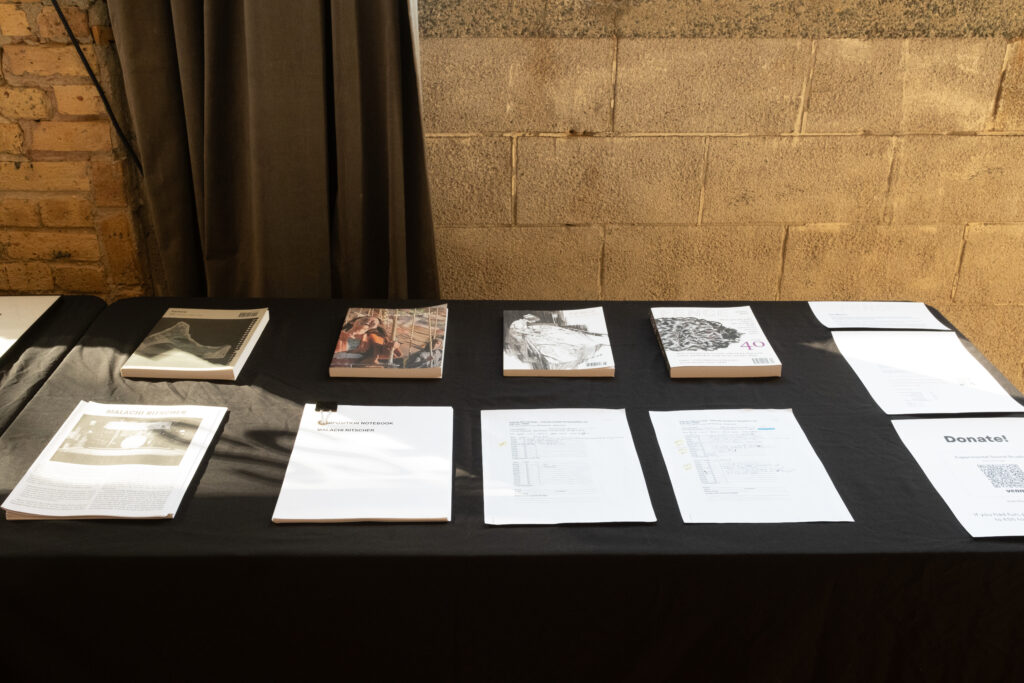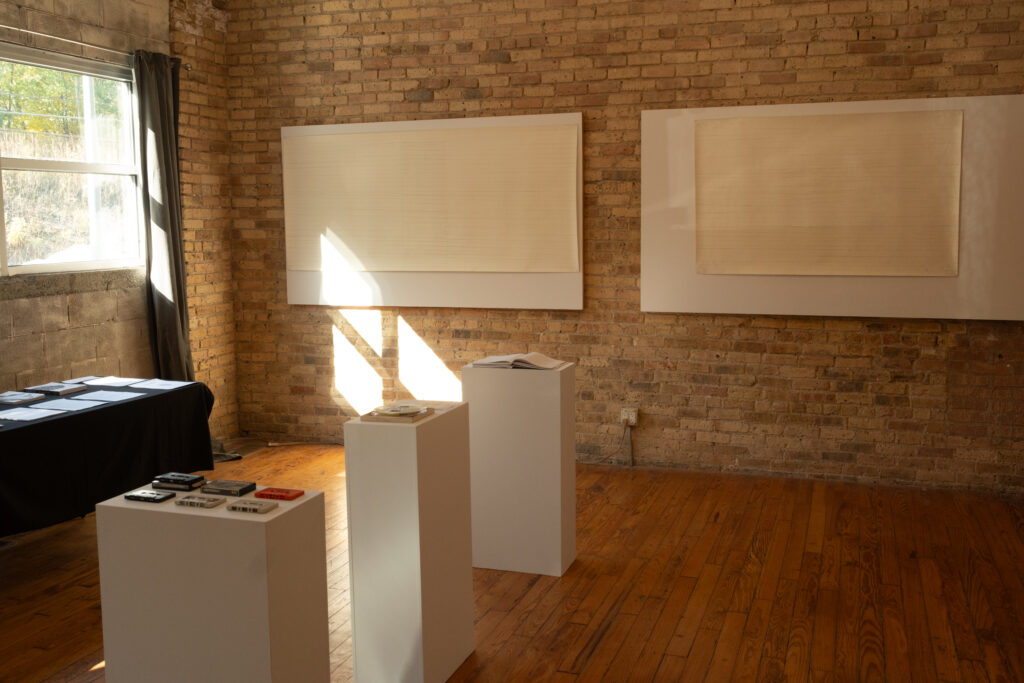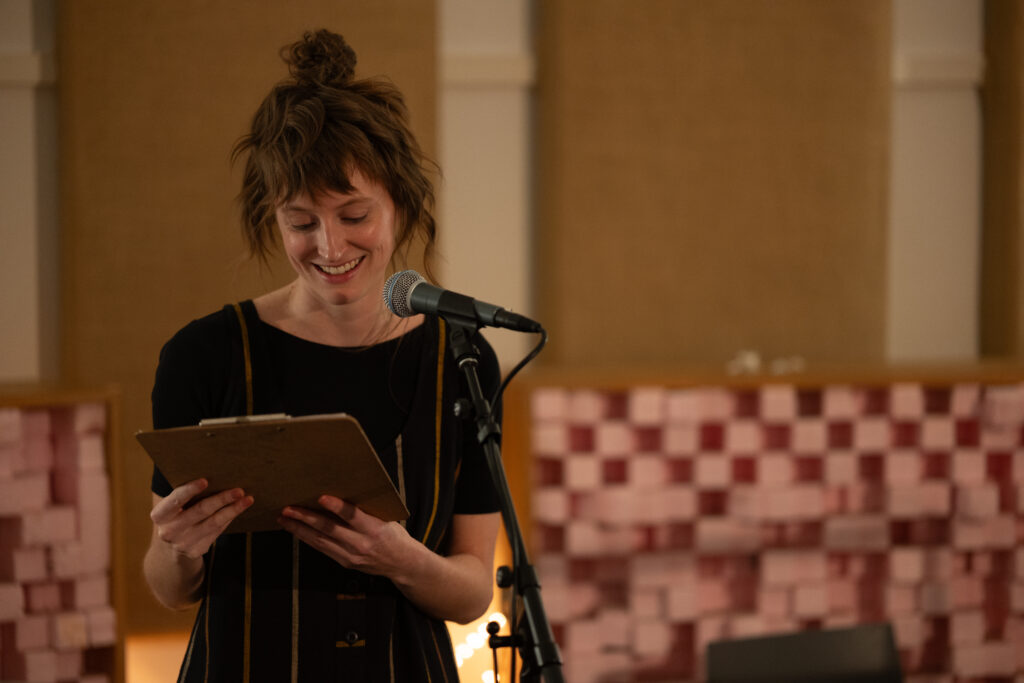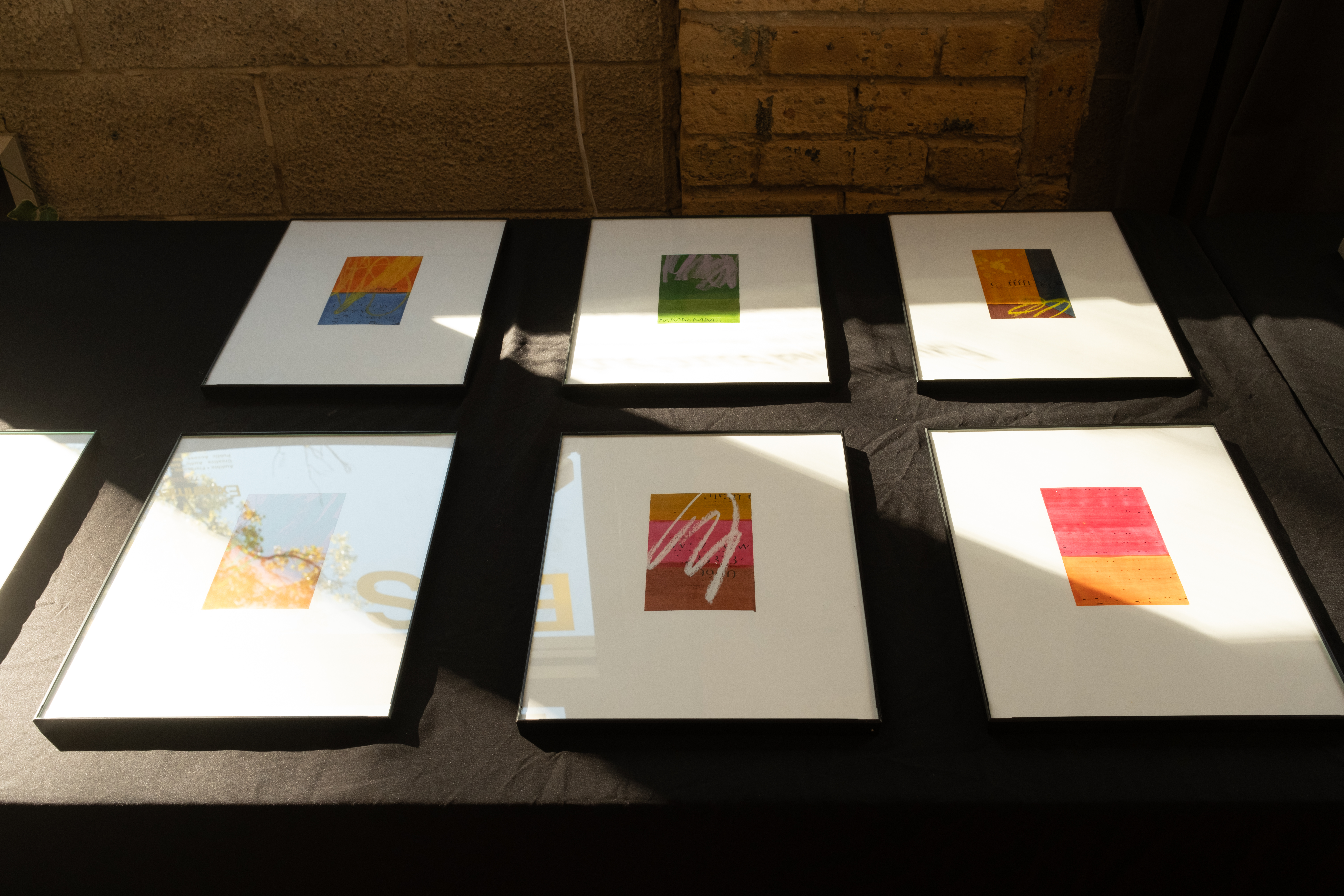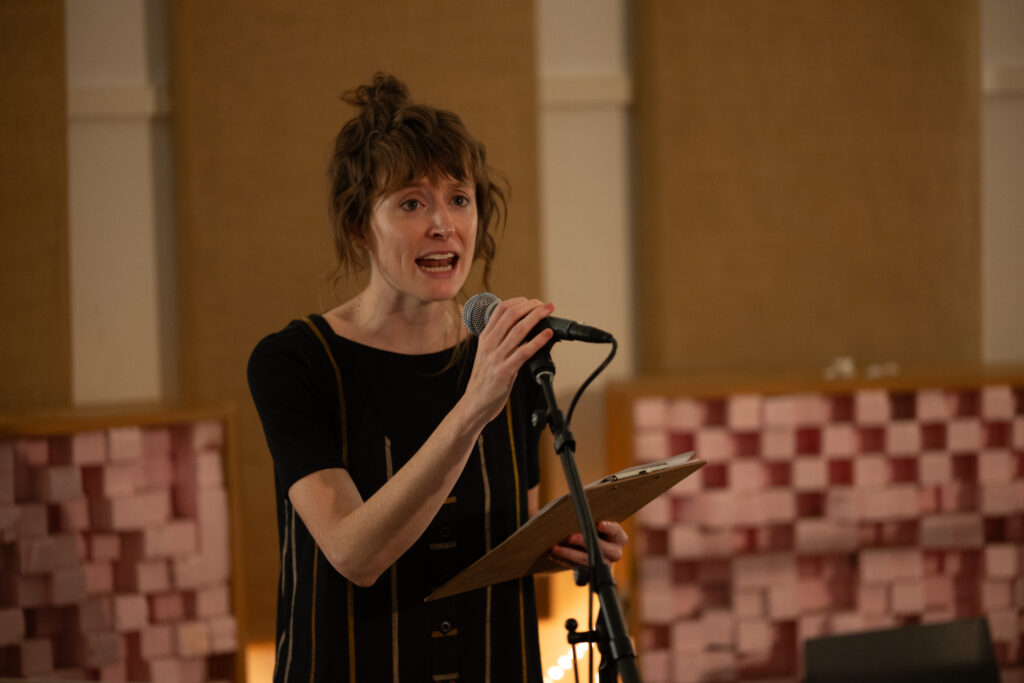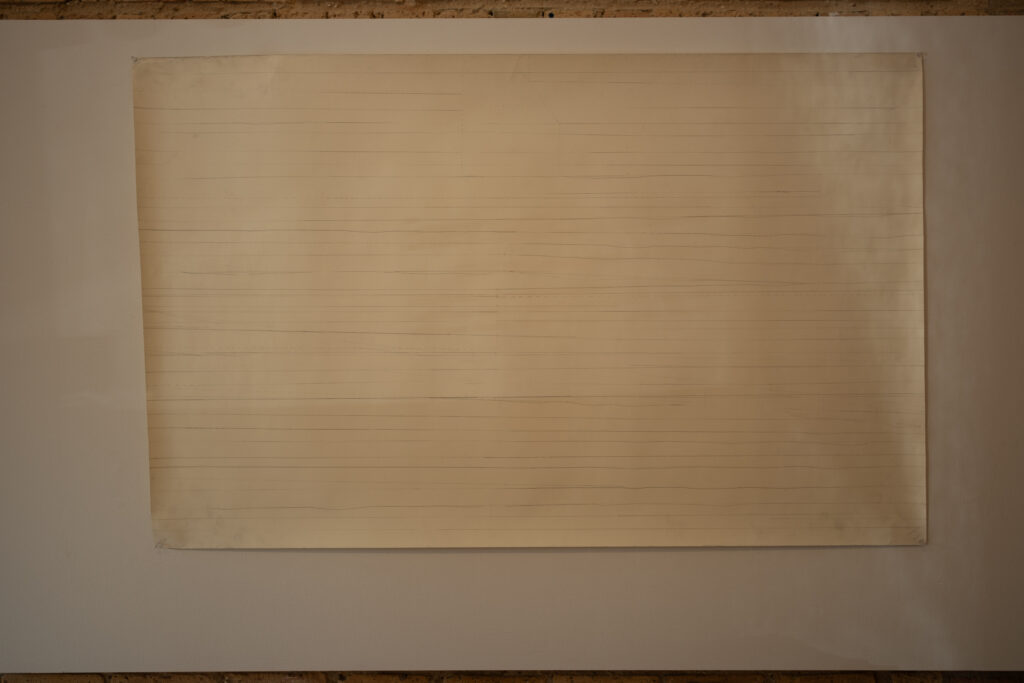In early spring of 2023, the Experimental Sound Studio (ESS) and Fence invited visual and sound artist Spencer Hutchinson and poet and writer Alyssa Perry to participate in the first of an ongoing series of cross-disciplinary exchange and collaboration between our nonprofit arts organizations. ESS and Fence suggested opening their sound and text archives to the two artists, so each might gamely cross over into exploration and encounter with works from the less familiar field.
Based in Chicago, Spencer was given unlimited access to the complete, fully searchable, digital archive of Fence magazine, all the poetry, fiction, and other printed in the first issue (Spring 1998) to the most recent.
Based in Cleveland, Alyssa travelled to Chicago to investigate ESS’s Creative Audio Archive, nine collections of experimental, jazz, and avant-garde sound projects.
Here below are videos from Alyssa's and Spencer's resulting live performances, which debuted at ESS’s Chicago outdoor performance space on October 22, 2023.
Their corresponding textual creations can be found in the pages of Fence issue 41 and via the links that follow.
Tragically, Spencer passed away earlier this year. His body of artworks, video, and music are a richly various and lasting legacy - we include links to all sorts of his astonishing projects on our Tribute page.
Here you can read listen to Spencer's work as published in Fence and listen to his own original music.
Here you can read and experience Alyssa's work as published in Fence,
Crossing Over & Into the FENCE + ESS Archives
INTRODUCTIONS:
Spencer: Having been a long time supporter of ESS, I was thrilled to have been selected as one of the resident artists for this exchange. I decided to take this project as a unique opportunity to develop and see afresh (interrogate? see from yet new angles) a project I have been working on for many years: works on paper that I have dubbed “Silent Piano Scores.”
The drawings are partly inspired by the paintings of Agnes Martin, the Zen philosophy of John Cage, and the formal pencil on paper techniques of composer Philip Glass. The drawings are done in a horizontal scroll-like format, similar to that of a player piano roll and consist of horizontal lines drawn across the page that sometimes break apart and go off on subtle angular tangents that cause the lines to appear continuous at first glance yet upon closer inspection are found to be quite varied.
I took for my first source material from the FENCE archives an editorial letter
written by editor Rebecca Wolff in which she writes that Fence might be thought of as “a demonstration of individuality in cross-section” analogous to the dissected body she encountered at the Chicago Museum of Science: a cisgender female person cut vertically from head to toe that is preserved between 50 sheets of glass. I saw a correlation in the division of the body and the format of the drawings. To make the connection more tangible, I produced a drawing of 49 lines and produced a poem sampling from lines of other poets that I felt reflected the emotional tone of the overall work that I wanted to produce, and inscribed it within the drawing.
I found Alyssa’s poems intriguing and challenging when I began to read them. It felt like being dropped into a metallic labyrinth of words. Some of the poems appropriate specialized syntax and semantics from commercial, technological, and other specialized realms. Her poems are not about her; instead they are intricate surfaces as remote and unyielding as one of Agnes Martin’s geometric abstractions. If you stay with them, with close attention and after several readings, they begin to shimmer, as one begins to perceive rich tones and feelings wavering between the human and inhuman. Her work created a mood that I felt was consistent with the aesthetic that I was trying to convey.
I also produced an “Audio Tapestry,” being a composition consisting of nonharmonic sine wave tones that overlap and continue or discontinue, similar to the waves in the “Silent Piano Scores.” Within the finished poem, I have embedded an abbreviated version of the poem that I generated from the pre-existing Fence texts.
Alyssa: In early April, I traveled to the ESS building in Chicago’s Edgewater neighborhood where CAA archivist James Wetzel introduced me to the collections. To sketch out the range, one could encounter photographs of Hal Rammel’s amplified palette and invented instruments, videos from Fred Anderson’s Velvet Lounge, audio of Alice Notley at Links Hall, or Malachi Ritscher’s recordings of local shows, like the set by Xiu Xiu I found early on. In the finding aid I found an entry for Ndikho and Nomusa Xaba’s “The Song of the Frogs,” a sound installation for elevators. It couldn’t be excavated from deep storage within the time I had, but I love to imagine it.
Guided by an ongoing project on space imaginaries, I gravitated toward the expansive Sun Ra/El Saturn Collection: mp3 files of Arkestra rehearsals and concerts along with a number of Ra’s lectures and poems (like SR-C211, “Sun Ra reading poems on telephone with Alton Abraham”), an original reel of The Nubians of Plutonia, and unlabeled cassettes, like the 30-second recording of a child humming almost below their breath.
Or SR-C239: Over twenty-one minutes, someone procedurally unfolds chromatic scales on a piano. Twice a telephone rings, complementing the piano’s particularized dissonance. Then, almost abruptly, the chords come together in brief melody.
I think about these octaves, the spareness and duration of which recalibrate my perception of time and sound, in relation to Spencer's audio tapestry and ambient electronic works. I am moved and instructed by the Arkestra’s commitment to recording, to keeping the tapes running. Everything is practice, nothing is practice. Stay attentive. (Does a version of that melody resurface elsewhere?) This ethos is echoed in Malachi Ritscher's documentary practice, about which I'll say more in subsequent pages.
Alyssa and Spencer: Throughout the residency, we exchanged writing, music, and conversation. Describing the audio tapestry in mid-April, Spencer spoke of sonic layers — “each line goes and breaks off and picks up, picks up again or kind of fades into a different one” — and how sounds can collide to create the illusion of other sounds that are not there. This also describes his verse composites drawn from the Fence archives.
Looking back, Spencer’s ideas set the parameters for Alyssa’s work here, too, a collision of impressions, thoughts, and phrases overheard at a concert. Voices intermingling, breaking off, picking up, combining to a sound that was not there before: also an archive, an exchange, a thing made.

ABOUT ESS: Founded in 1986 by Dawn and Lou Mallozzi, Eric Leonardson, and Perry Venson, Experimental Sound Studio (ESS) has occupied its Edgewater location since 2006. The facility is home to a full-service recording, mixing, and mastering studio for hire; Audible Gallery, a small public space for exhibitions, meetings, workshops, performances, and artists' projects; and the Creative Audio Archive—an invaluable collection of recordings, print, and visual ephemera related to avant-garde and exploratory sound and music of the last five decades, including the Malachi Ritscher Collection, which Alyssa engaged in her project. ESS presents eclectic performance and installation programming, workshops, and artist talks year round—both in the various spaces around the studio (including its beautiful garden) and at various partner venues around Chicago.
Alyssa Perry’s (Cleveland, OH) poems appear in Annulet, The Canary, Fence, Mercury Firs, River Styx, and elsewhere. Perry is an editor at Rescue Press and Cleveland Review of Books. Her book Oily Doily will be published by Bench Editions in fall 2024.
Instagram: @lysperry
Spencer Hutchinson (Chicago, IL) was a Multi-Media Visual and Sound Artist, a 2009 BFA Graduate of The School of the Art Institute of Chicago, where he studied Painting, Sound and New Media, and a 2020 MFA Graduate from The University of Illinois at Chicago where he studied Studio Arts and received his degree in New Media Studies. Between earning his degrees he studied painting, electronic music production, 3D Animation and Virtual Reality at Indiana University, as well as Drawing/Art History, Theory and Criticism at The University of Chicago as a non-degree seeking student. Spencer Hutchinson has shown work nationally and internationally in Italy, Mexico, and the U.K.
Instagram: @nihon0019
Bandcamp: Ersatz Modem
Vimeo: Ersatz Modem
